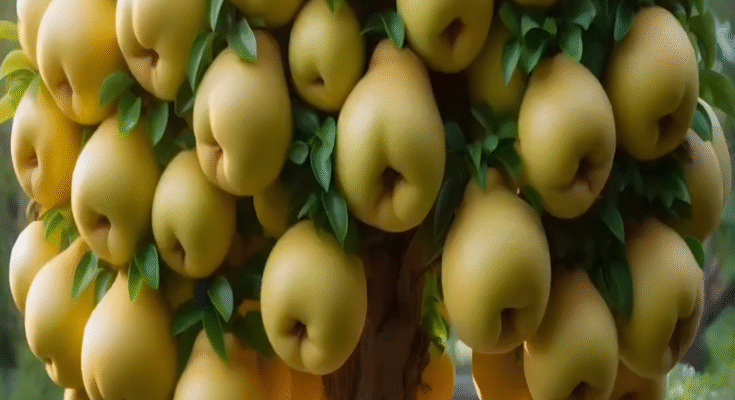Genius Planting Tricks to Boost Your Pear Harvest!
Growing juicy, sweet pears in your own backyard can be one of the most satisfying gardening accomplishments you’ll ever achieve. While pear trees are generally hardy and productive, there are several genius planting tricks that can help you boost your pear harvest dramatically. Whether you’re a beginner gardener or an experienced orchard keeper, these clever methods will help you enjoy baskets of beautiful pears year after year.
Choose the Right Variety
One of the smartest things you can do for a successful pear harvest starts with choosing the right variety. Not all pear trees thrive in every climate. European pears like ‘Bartlett’ and ‘Anjou’ do well in cooler climates with chill hours, while Asian pears such as ‘Shinseiki’ and ‘Hosui’ are better suited for warmer areas. Research varieties that match your local climate and disease pressures. Planting two compatible varieties for cross-pollination will also boost fruit set.
Plant in the Perfect Spot
Pears need plenty of sunlight — at least six to eight hours of direct sunlight per day. Pick a planting site that gets full sun and has good air circulation to help prevent fungal diseases like fire blight. Avoid low spots where cold air settles, which can damage blossoms during spring frosts. Pears prefer well-drained soil rich in organic matter, so amend your soil with compost before planting.
Use the Right Spacing
Overcrowding is a common mistake in backyard orchards. Give your pear trees enough space to spread and grow. Standard pear trees need about 20 to 25 feet between them, while dwarf or semi-dwarf trees can be planted 12 to 15 feet apart. Adequate spacing ensures good air circulation, reduces disease risk, and allows sunlight to reach all branches for better fruit development.
Master the Art of Grafting
A genius trick used by many experienced growers is grafting. By grafting different pear varieties onto the same rootstock, you can grow multiple types of pears on one tree — maximizing your harvest in a small space and extending your harvest season. Grafting also allows you to repair damaged trees or improve poor fruit quality. Learn to graft in late winter or early spring when trees are dormant for best results.
Feed and Mulch for Healthy Trees
Healthy soil equals healthy trees. Feed your pear trees each spring with a balanced fertilizer high in nitrogen, but don’t overdo it — too much nitrogen encourages leaf growth at the expense of fruiting. Mulch around the base of the tree with straw, wood chips, or compost to retain soil moisture, regulate soil temperature, and suppress weeds. Keep mulch a few inches away from the trunk to prevent rot.
Prune for Productivity
Proper pruning is one of the most genius tricks to boost any fruit harvest, especially for pears. Pruning improves sunlight penetration and air circulation within the canopy, resulting in healthier, more productive trees. Remove dead, damaged, or diseased wood, and thin crowded branches to open up the tree. Train young trees to develop strong, well-spaced branches that can hold heavy fruit without breaking. Winter is the best time to prune pears when the tree is dormant.
Encourage Pollinators
No pollination, no pears! Pear blossoms rely heavily on bees and other pollinators. To attract these helpful friends, plant pollinator-friendly flowers near your orchard such as lavender, clover, or wildflowers. Avoid using insecticides during bloom time, as they can harm pollinators. If you have poor pollination despite having multiple varieties, consider hand-pollinating the flowers with a small paintbrush.
Control Pests and Diseases Naturally
Pears can be susceptible to pests like pear psylla, codling moths, and diseases like fire blight. Monitor your trees regularly and act quickly at the first sign of trouble. Use organic or natural pest control methods whenever possible. Beneficial insects such as ladybugs and lacewings help keep harmful pests in check. Prune out infected branches and clean up fallen fruit to break the cycle of pests and diseases.
Try Companion Planting
Companion planting is a time-tested trick that can boost the health and productivity of your pear trees. Plant herbs like chives, garlic, or nasturtiums near your trees — these can repel pests and attract beneficial insects. Clover and other legumes can improve soil nitrogen levels naturally, feeding your trees without synthetic fertilizers.
Stay Consistent with Watering
Pear trees need consistent moisture, especially during the growing season and while fruits are developing. Water deeply once a week, providing about an inch of water each time. During dry spells, increase watering frequency but avoid waterlogging the soil, which can suffocate roots. A good layer of mulch will help retain soil moisture.
Harvest at the Right Time
Finally, knowing when to pick your pears is key. Most pears don’t ripen fully on the tree — they should be harvested when mature but still firm. Pick when they are slightly green and allow them to ripen indoors at room temperature. This prevents the fruit from becoming mealy or mushy on the tree and ensures the sweetest flavor.
By applying these genius planting tricks — from choosing the right varieties and pruning wisely to encouraging pollinators and using grafting techniques — you’ll set yourself up for an abundant pear harvest every season. With a bit of planning and care, you can transform your backyard into a pear paradise overflowing with delicious, homegrown fruit. Happy planting and enjoy your bountiful harvest!



